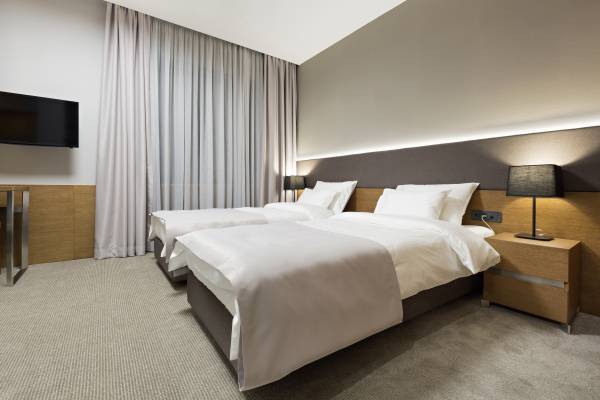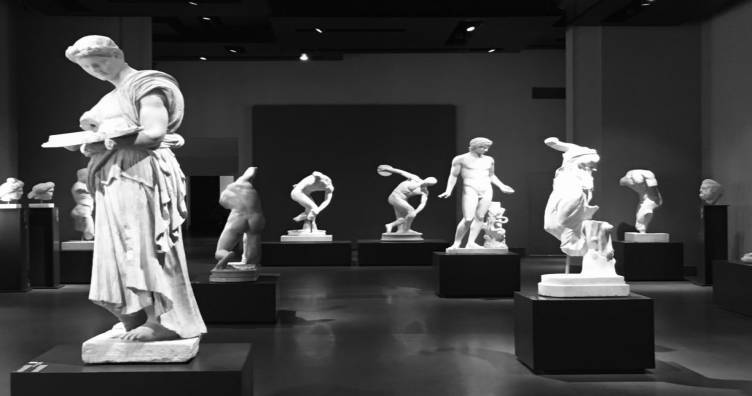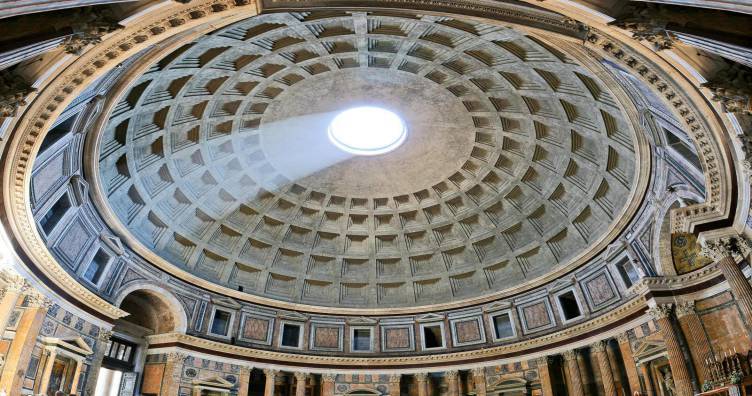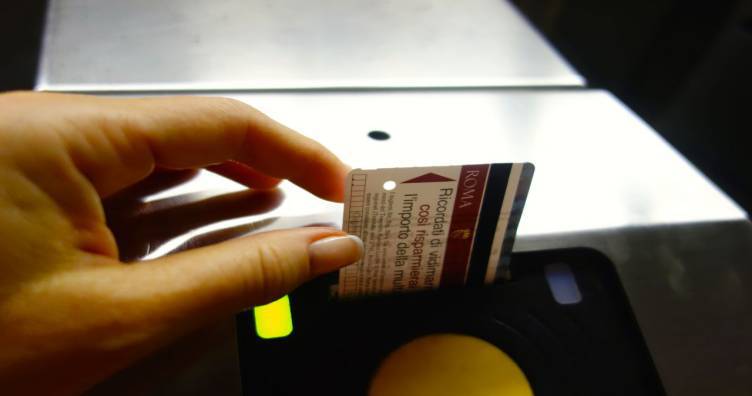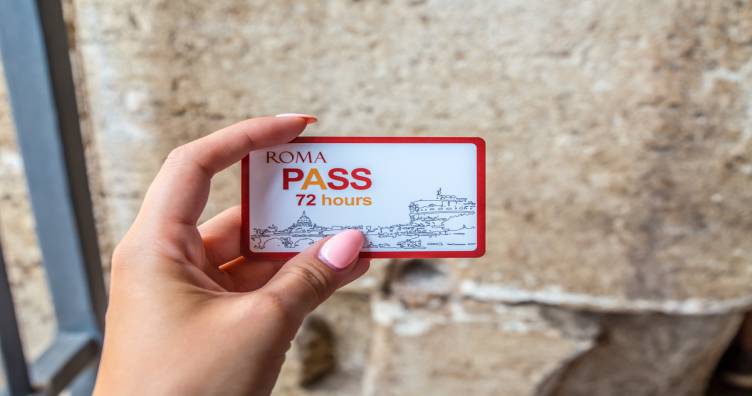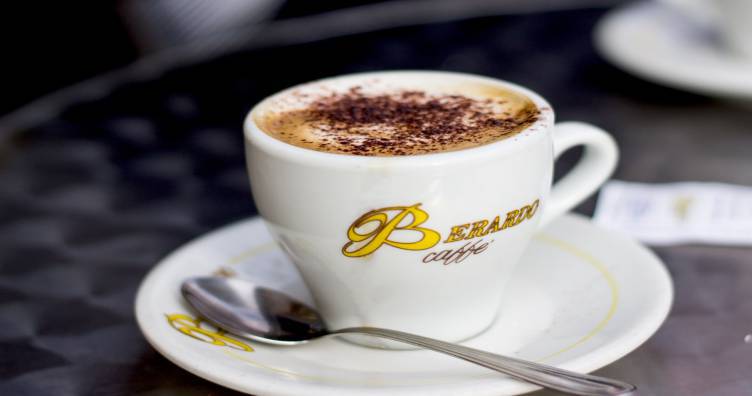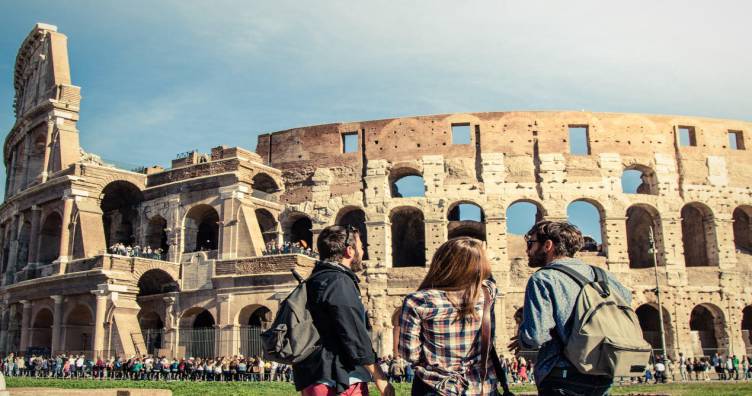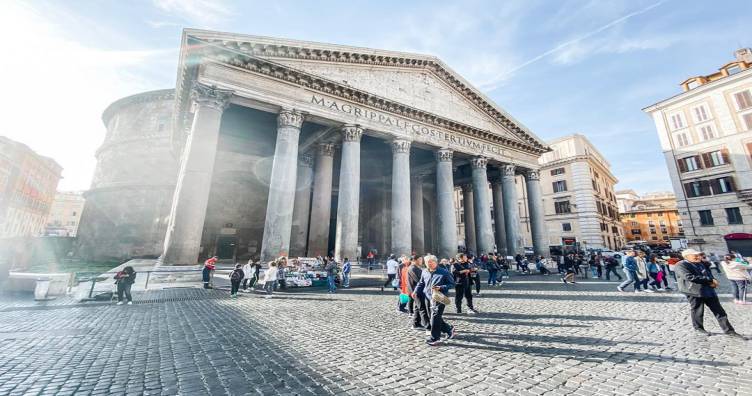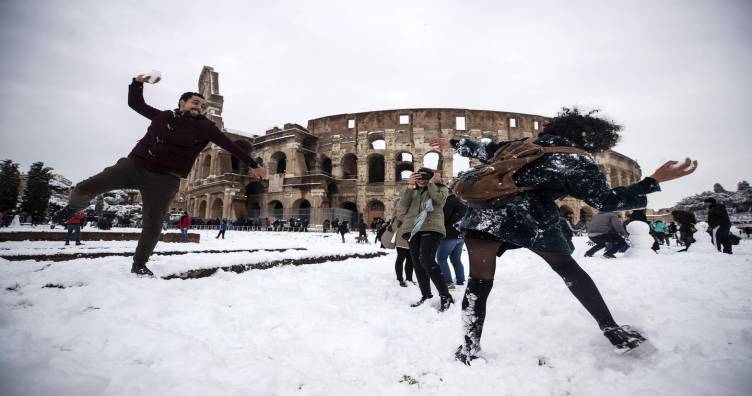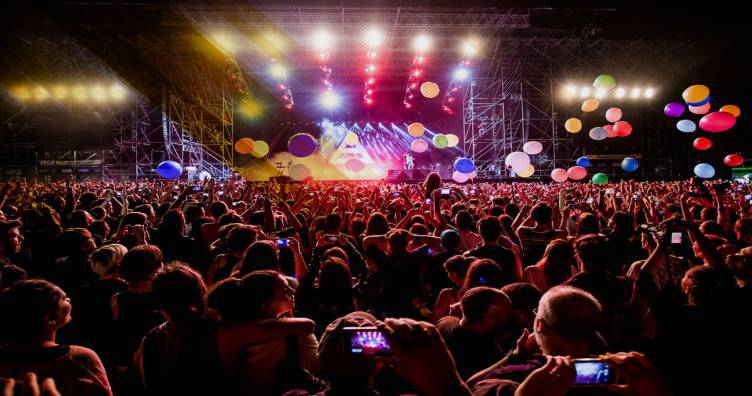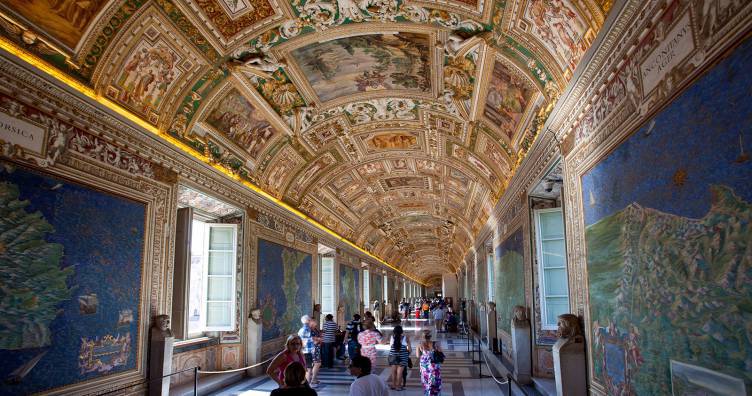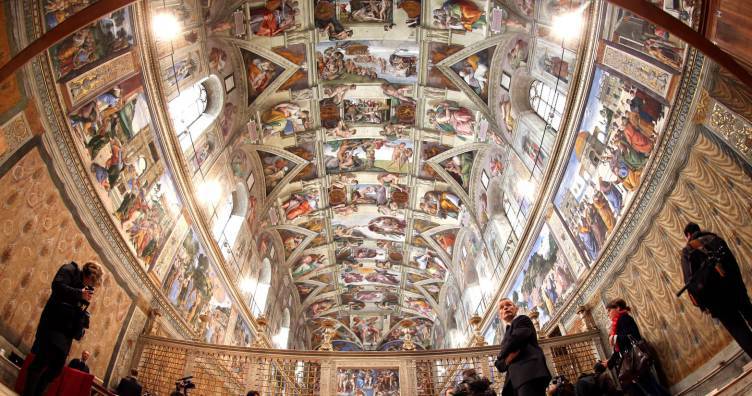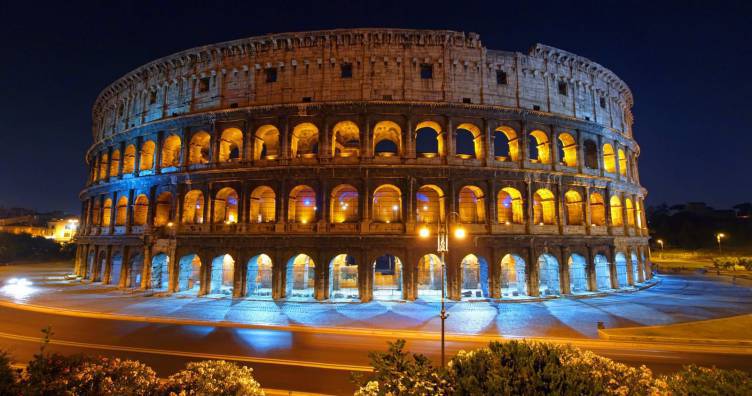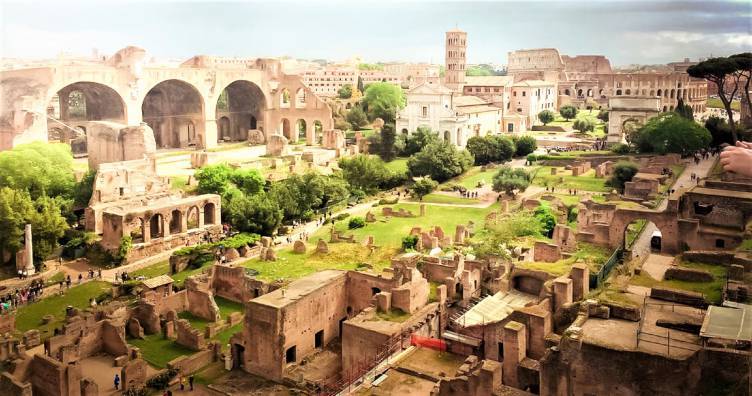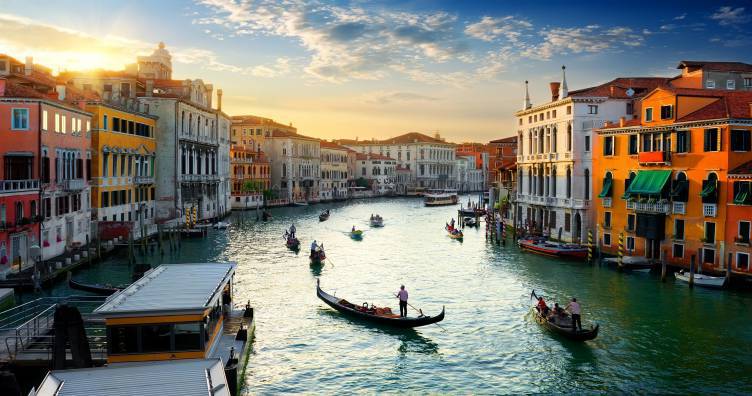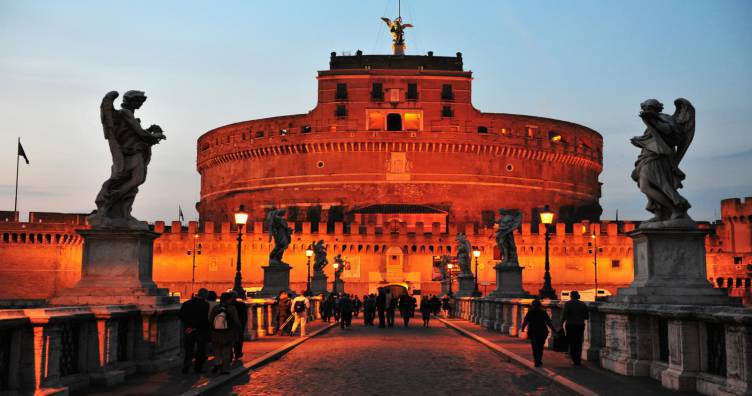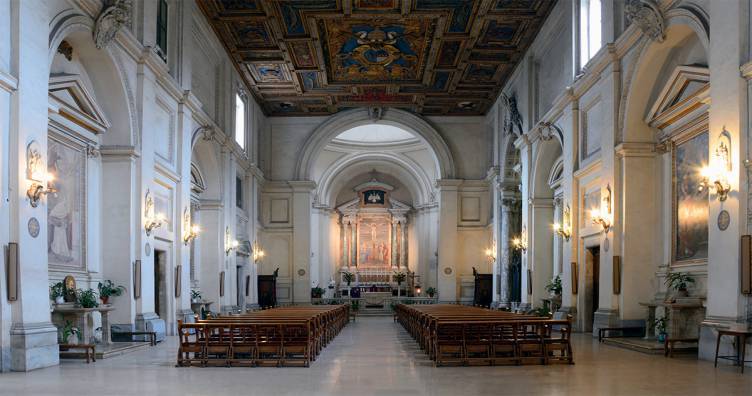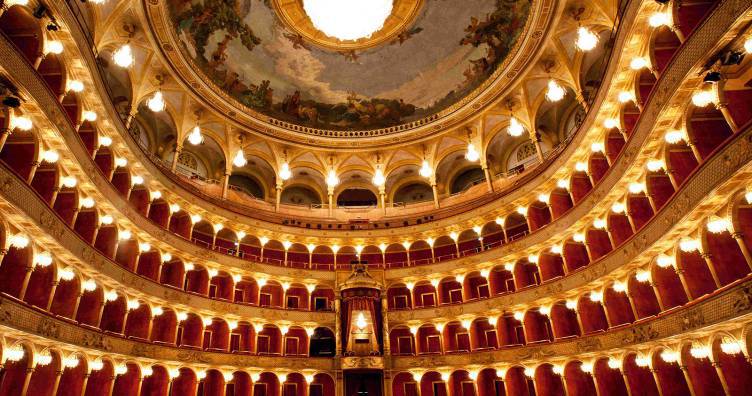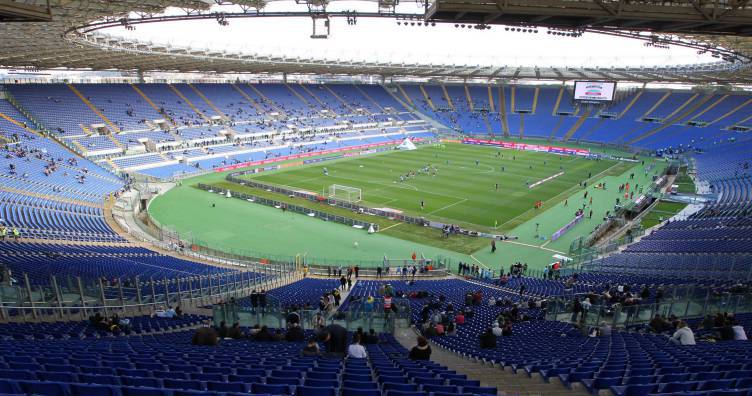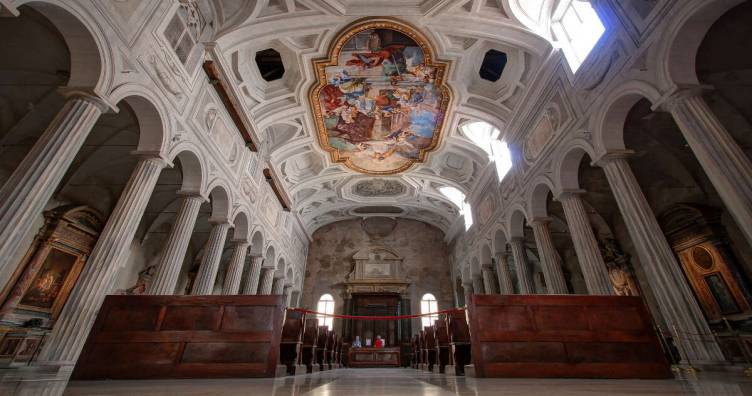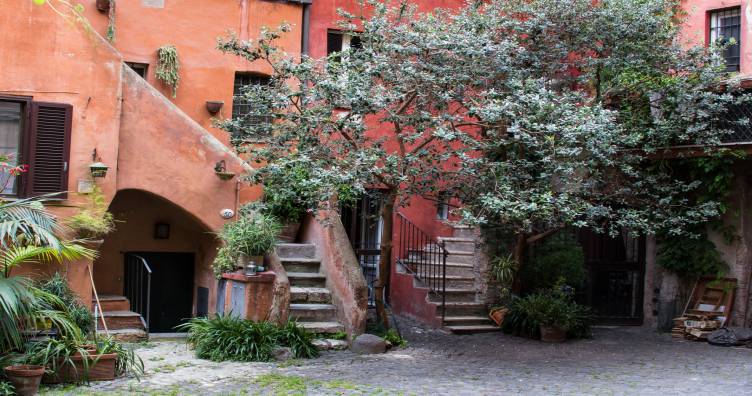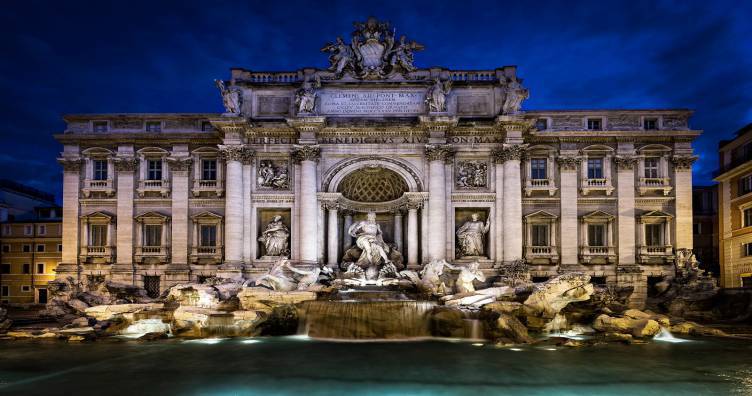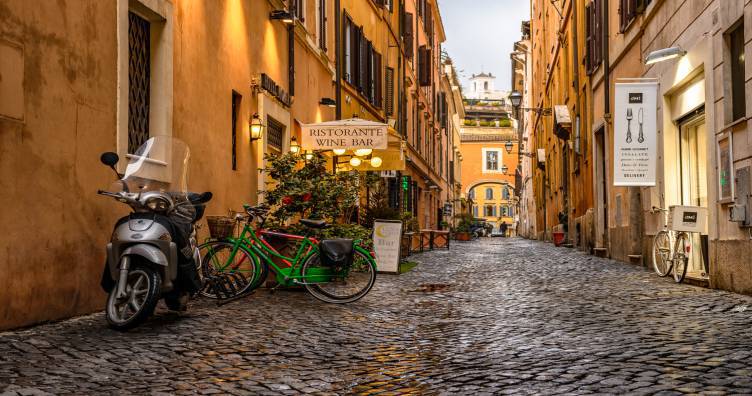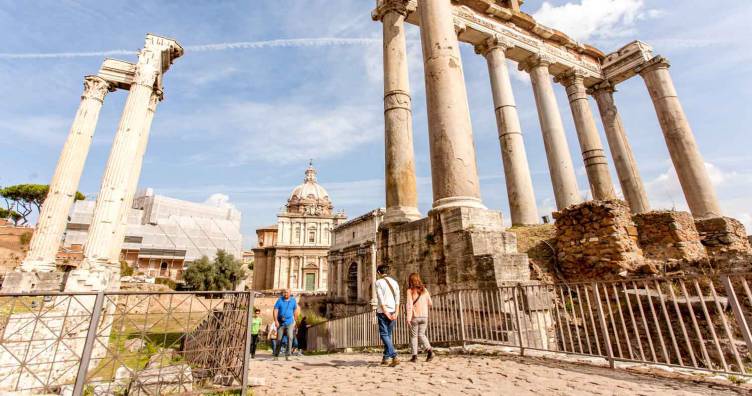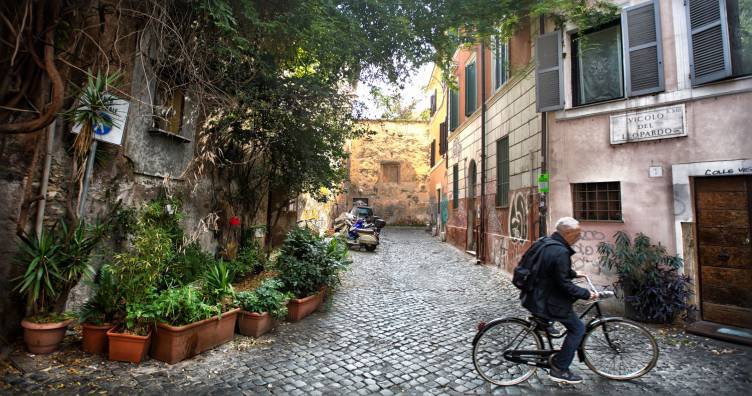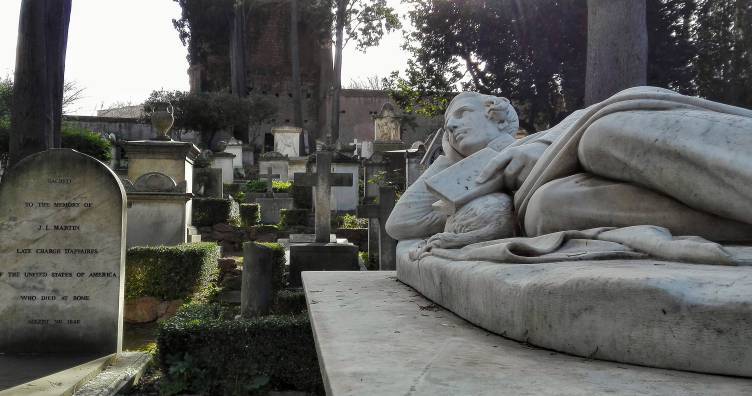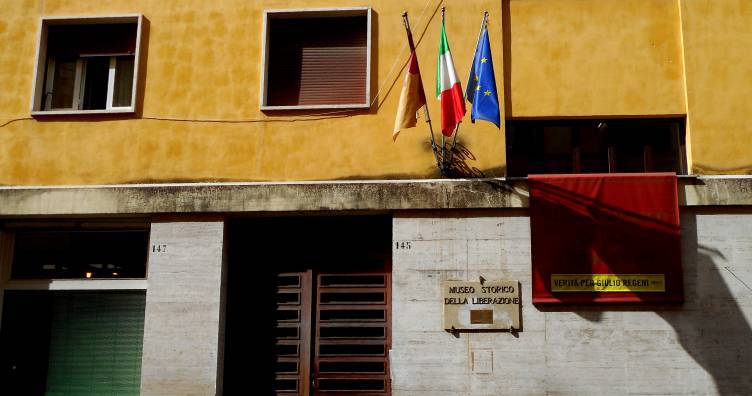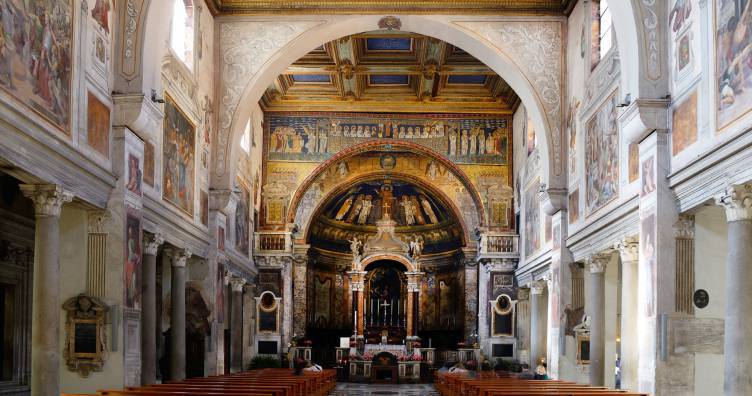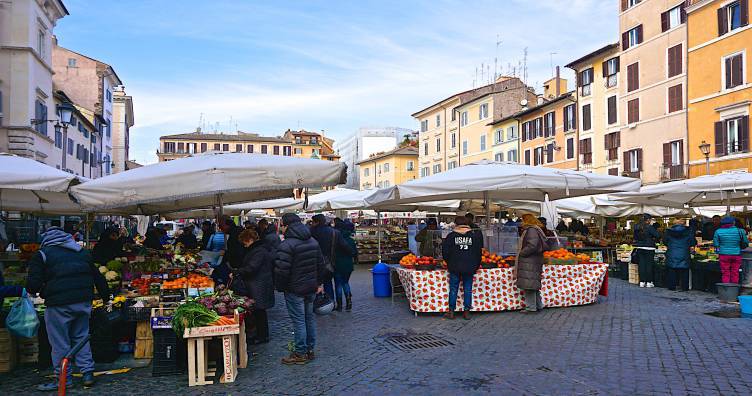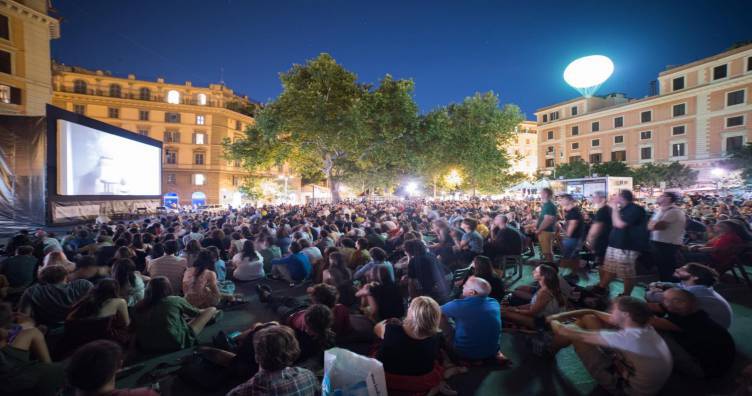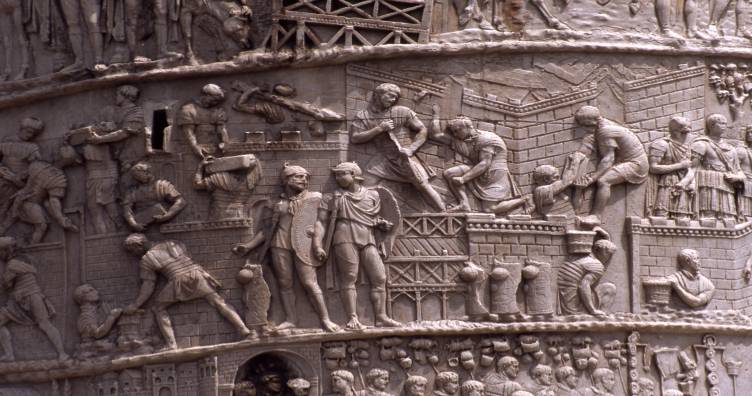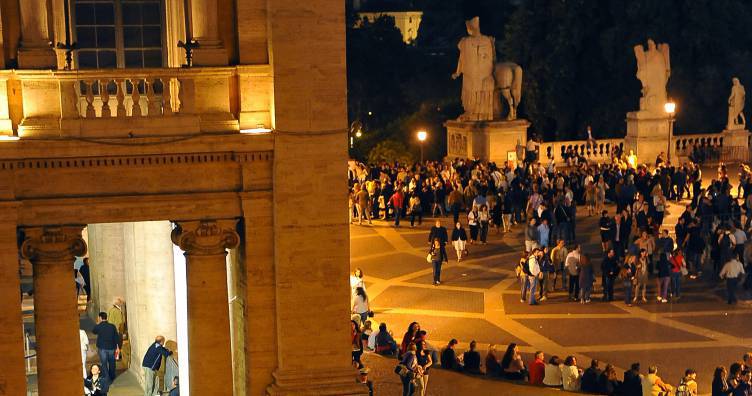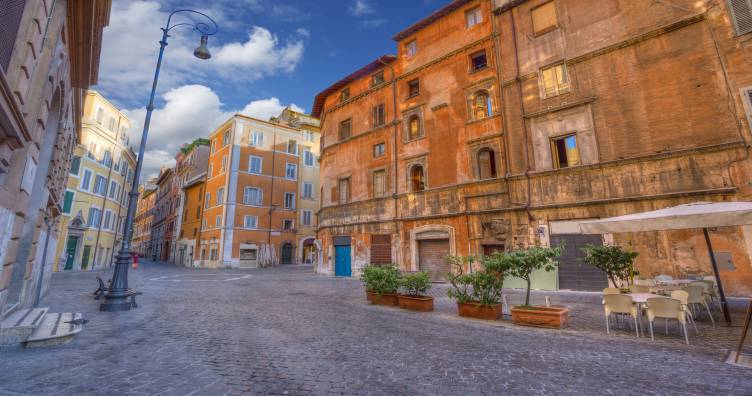ROME.
There are no words able to describe the beauty of Rome. The Eternal City has no rivals to the title of the most awe-inspiring tourist destination. While being just perfect for a city break, do not expect to be able to explore all the iconic monuments, sights and museums which Rome has to offer in one trip. From the vast museums of Vatican City to the stunning Villa Borghese, all the way through the Pantheon, Roman Forum and Colosseum, not to mention dozens of other must-sees located all around the city, every second spent in Rome is a dream come true and will leave you hungry for more. Of course, Rome is much more than just the historical legacies. It is also a place full of wonderful art, which can be encountered in any of the many museums. It caters to the body as much as it caters to the soul, giving you plenty of occasions for entertainment in the nightclubs, pubs, and bars. When it comes to the food, the locals really know how to feast, be it a simple pizza or a sophisticated European meal that you desire. At the end of the day, Rome offers everything one could desire from a tourist destination, and more.
Top 10 Things to See and Do in Rome
The Vatican Museums
A premium visit to the Vatican Museums may be a bit pricey but is definitely worth it, as it allows you to skip the line, which can last for hours, and provides a guided tour of places such as Raphael's Room. There are options for a live guided tour and also for headset-prepared audio guides, which allow you to go at your own pace.
Sistine Chapel VIP tour
This three-hour long tour of the Sistine Chapel allows you to enter without waiting in a line and provides an exclusive entrance for your group only. The trip takes you along the hidden corridors and secret rooms of the Chapel and provides a guide, which under normal circumstances is forbidden as you need to remain quiet.
The Colosseum
Standing in the queue during the hot months of the year in Rome is not only uncomfortable but also dangerous, as you might get a heat stroke. This skip-the-line guided tour of the Rome's most renowned attraction site provides a half-day walking trip around the two-thousand years old monument of Ancient Rome.
Pompeii and Mount Vesuvius trip
An all-day guided trip which takes you around the outskirts of Rome and shows you the ancient city of Pompeii, as well as a hike to the summit of Mount Vesuvius with a well-oriented guide who will show you the correct way. Entrance fees are included in the price of the trip, and free history lessons from the guide are a nice bonus.
Palatine Hill guided tour
Palatine Hill, once the centre of both the political and religious life of Ancient Rome, features many amazing monuments, including the Arch of Septimius Severus, Temple of Saturn, House of the Vestals and Arch of Titus. This guided tour takes you through all of those and provides commentary on the history of the monuments.
Venice City sightseeing tour
This trip comes in two variants: 24-hour and 48-hour with a hop-on-hop-off boat tour around the Venice itself. The tour allows you to visit Venice and wander around at your own pace with guaranteed access to fast boats which take you around the city, circling places such as Murano Island, Venice Lido or Piazza San Marco.
Angels and Demons half-day tour
A tour which takes you around the iconic spots and moments of Dan Brown’s famous novel Angels and Demons. The tour explores many of the sites mentioned in the book, showcasing the statues of Bernini and many ancient churches. The ticket includes a knowledgeable guide as well as a free entry to the Castel Sant’Angelo.
St Sebastian Catacombs
This three-hour long walking tour of the catacombs of St Sebastian takes you along the ancient Roman road – Via Appia. Along the way, you visit the Basilica of St Sebastian, where you delve deep underground to explore its catacombs. A guide is included to tell you about the history of the ancient Christian burial chambers and their importance.
I Virtuosi dell'Opera di Roma: La Traviata
This one is a must-see for opera and theater enthusiasts which come to Rome for the first time. This two-and-a-half-hour-long concert allows you to enjoy Giuseppe Verdi’s most renown opera La Traviata, performed by the famous Virtuosi dell’Opera di Roma, which takes place in the gorgeous Salone Margherita Theatre.
Roma’s Stadio Olimpico
An attraction perfectly fitting sports fans who come to Rome during the season of football matchups. Take a seat in the biggest stadium in Rome and watch a game with an included gourmet buffet and an open bar. You also get the best view possible inside of the Tribuna d'Onore VIP section, and after the match, you get a complimentary football scarf.
Other Things to See and Do
Chiesa di San Pietro in Vincoli
Take a trip around the Chiesa di San Pietro, located in Vincoli, which holds a grand monument of Moses sculpted by Michelangelo himself. The muscular statue is located in the star turn of the fifth-century church. The church also holds the chains of St Peter, which he supposedly wore during his captivity.
Arco degli Acetari
Take a walk through the famous arch in the city of Rome, which is called the vinegar maker's arch. The arch appears to be constantly under construction, but if you take a route around the wheelbarrows and bags of cement, you will find yourself in an internal courtyard, which is the place of the best vinegar makes in Rome for centuries.
Trevi Fountain
If you believe in such things, according to a legend throwing a coin down the Trevi Fountain will make sure you get back safely on the trip back from Rome. Take a photo while chucking the coin behind your back, with the gorgeous fountain decorated with numerous ancient sculptured lurking in the background.
Via Margutta
Via Margutta, located in the centre of Rome near Piazza del Popolo, is a narrow street which was originally the home of many craftsmen and their workshops, as well as a few stables. Now the street hosts a variety of art galleries and fashionable restaurants, which are all worth seeing while in the vicinity.
Take a stroll around Villa Borghese
This park is one of the Rome’s most famous strips of terrain, with a plethora of shaded walkways which are a blessing in the summer. The park is home to many picturesque temples which are stylised to resemble ruins, with their array of sculptures and copies of other monuments, such as the Arch of Septimius Severus.
The Pantheon
For more than a thousand and eight-hundred years the Pantheon was the biggest tribute to the ancient gods of Romans. This greatest living artifact of the Rome’s ancient culture is standing in the Piazza della Rotonda, and you can admire its granite columns and unreinforced concrete dome from Monday to Sunday for free.
The Roman Forum
This spot was probably the most important place in the Ancient Rome, acting as the main centre for all political activities, such as public speeches of philosophers, elections, trials, and even gladiator matches. The Roman Forum is decorated with numerous sculptures of Rome's most important individuals and can be visited free of charge.
Trastevere
Take a stroll by the Tiber river through Trastevere, the charming medieval district with a vibrant nightlife. Trastevere is a former working-class district and provides a sight worth seeing with its labyrinth-like streets and glittering mosaics. In the evening, tens of bars and clubs open up to the public, providing a place to spend your time.
Cimitero Acattolico
This non-catholic cemetery of Rome is also often referred to as the Protestant Cemetery, placed in the region of Testaccio. It is home to many famous personas after their demise, mostly from the United Kingdom, and as such holds the graves of famous English poets – John Keats and Percy Bysshe Shelley.
Museo Storico della Liberazione
Take a history lesson on the times of the Second World War and see for yourself the effect of Nazi occupation in Rome. This museum will chill your spine and allow you to visit the old SS headquarters of the city, located at Via Tasso, which was once used to torture captured members of the Italian Resistance.
Chiesa di Santa Prassede
This easy-to-miss titular church is a minor basilica in Rome, located near the papal basilica of Saint Mary Major. The church was commissioned to be built around the year 780 and was built on top of a fifth-century structure. The church is most famous for its gorgeous mosaics, depicting Jesus, St Peter and St Paul.
Take a part in passeggiata
If you have a free evening while visiting Rome, make sure to pay a visit to the Via del Corso and join the locals in their early-evening stroll around the streets of Rome. The tradition is to slowly walk through the main streets of the city, making for a perfect opportunity to show off new and stylish clothes to the public.
Campo de' Fiori
The name of this square means "a field of flowers," and is located to the south of Piazza Navona in Rome. The name of the square dates back to the Middle Ages when it was just a meadow filled with various flowers. Now the square hosts a daily market, placed around the monument of the philosopher Giordano Bruno at the centre.
Quartiere Coppedè
Make sure to pay a visit to the Quarterie Coppedè, a neighborhood that stands in contrast to the serious and sophisticated sights of Rome. The neighborhood is filled with various turreted villas, fairy-tale towers, gargoyles and many more, providing an Art Nouveau vibe to this little district of the city of Rome.
Largo di Torre Argentina
This square, located in the Campus Martius, holds four Roman Republican Temples and the remains of Pompey's Theatre. Part of the square was reconstructed in 1909, which demolished the zone of Torre Argentina, but during that time a large marble statue was discovered. It is also the place of Julius Caesar's assassination.
Estate Romana
Holding a variety of different late-night museums and book fairs, Estate Romana is definitely a place to see for culture enthusiasts. The place also holds many event stages during the summer months, ranging from concerts and dance performances to theatre pieces, some of which are free for the public to see.
Piazza del Campidoglio
The symmetry of this renowned square is famous even outside of the city of Rome. Michelangelo designed the square with care, placing a mosaic-like pattern around the street. The middle of the square is fitted with a large statue and is located on a hill once dedicated to the glory of the god Saturn.
Trajan’s Column
If you’re visiting the Imperial Forums, take a detour to see the marvelous ancient landmark which is the Trajan’s Column. The column depicts the military campaigns of Trajan and honors his victory in the Dacian Wars. The column was most probably constructed by the architect Apollodorus of Damascus and was completed in 113.
All state museums
There is plenty of state museums to visit in Rome, and while they are generally paid to visit, there is a brief moment where anyone can take a trip without any cost. If you come to one of the museums on the first Sunday of the month, you will be eligible for a free tour, but mind to come early since the lines are long.
The Jewish Ghetto
Nowadays this famous ghetto is filled with small vintage shops, artisan studios, bakeries and small restaurants, all worked by Jewish people of Rome. The ghetto was established in 1555 in the Rione Sant’Angelo, and its life was of severe poverty, due to restrictions and limitations placed on its people by the state.



